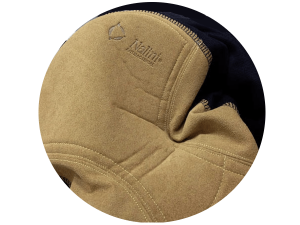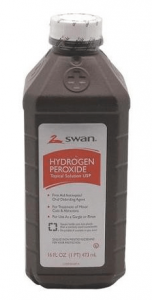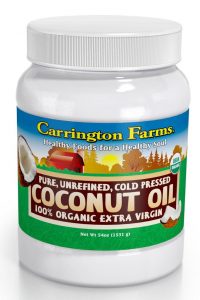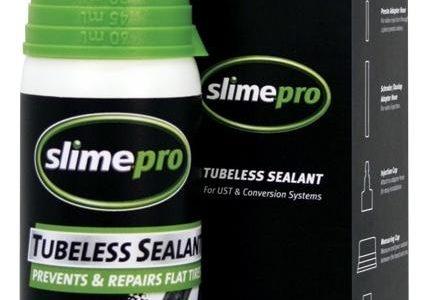ALTERNATIVES TO CHAMOIS CREAM
In cycling, one product that never gets discussed much is Chamois Cream. Chamois used to be made out of real  leather, and, after washing and drying your cycling kit, the chamois had the same consistency as a piece of rawhide. You needed a good cream that would soften the leather enough to be able to use the cycling shorts for your next ride. Fast forward to today, chamois are made from variable thickness foam layers capped with a synthetic material to match the cyclists needs whether that be touring, racing, off-road, etc.
leather, and, after washing and drying your cycling kit, the chamois had the same consistency as a piece of rawhide. You needed a good cream that would soften the leather enough to be able to use the cycling shorts for your next ride. Fast forward to today, chamois are made from variable thickness foam layers capped with a synthetic material to match the cyclists needs whether that be touring, racing, off-road, etc.
Chamois creams have also evolved, from moistening leather that has been dried to a cardboard-like texture to being used as an anti-bacterial skin emollient. Today, there are a lot of different Chamois Creams on the market and all of them work pretty well. To name a few;
 Since I’m always looking for alternatives or anything that’s better, I have found and tested 2 products that work very well and are worth mentioning.
Since I’m always looking for alternatives or anything that’s better, I have found and tested 2 products that work very well and are worth mentioning.
These two products might not have the anti-bacterial and/or anti-fungal properties of some of the name-brand products, but, rinsing your bottom with 3% Hydrogen Peroxide and then drying off with a clean towel before putting on your after the ride attire can provide this. (A 16 ounce bottle of 3% Hydrogen Peroxide will cost approximately $1.41 at Walmart. Hydrogen Peroxide is a mild antiseptic but, as with all over the counter products, refer to the label for actual usage or talk to your doctor first.)
VASELINE BODY GEL OIL

The first product I tried was VASELINE® INTENSIVE CARE™ COCOA RADIANT™ BODY GEL OIL 6.8 ounce. At a street price between $6.48-$7.69, this is very cost effective at $0.95/oz to $1.13/oz.
Vaseline body gel is mineral oil based but also includes hydrogenated styrene/butadiene copolymer (a non-hazardous non-aqueous film forming viscosity increasing agent) , theobroma cacao seed butter (a non-hazardous skin conditioning / skin protecting agent) and some fragrance as ingredients. One drawback is that a look through Vaseline’s product reviews shows that this might cause itching and rashes on those with sensitive skin so use with caution the first time.
HOW WELL DOES IT WORK?
Doing 2 sets of 30 minutes at 120 rpm with bursts up to 135 rpm is like adding an extra 60 miles to where you contact the saddle. The first time I did this workout I used a thin cream that was absorbed right away and the outcome was that I was rubbed raw! So, the next time I did spinning intervals, I used this body gel and had no further problems with chafing.
SCORE – VASELINE® INTENSIVE CARE™ COCOA RADIANT™ BODY GEL OIL = 4.75/5
The one drawback is that on longer rides, a lot of the gel seems to get absorbed
COCONUT OIL
 find – 54 oz! There are quite a few different grades of Oil. Organic, Virgin, Extra-Virgin, cold-pressed, etc., etc. Since we are not cooking with it, pick up any premium grade such as CARRINGTON FARMS. It’s listed as a Pure, Unrefined, Cold Pressed 100% Organic Extra Virgin COCONUT OIL. Cost is $23.30 for a 54 oz jar.
find – 54 oz! There are quite a few different grades of Oil. Organic, Virgin, Extra-Virgin, cold-pressed, etc., etc. Since we are not cooking with it, pick up any premium grade such as CARRINGTON FARMS. It’s listed as a Pure, Unrefined, Cold Pressed 100% Organic Extra Virgin COCONUT OIL. Cost is $23.30 for a 54 oz jar.
1) Virgin vs Refined
2) Processing Methods
3) Organic vs Conventional
4) Glass Container vs Plastic jars
HOW WELL DOES IT WORK?
SCORE – COCONUT OIL = 5/5
SO WHICH IS THE BEST?
SUMMARY

I have always enjoyed bicycling and, through a series of coincidences, became a Bicycle Industry Consultant and Product Tester. I test prototype products for companies and have published only off the shelf production products on biketestreviews.com.


